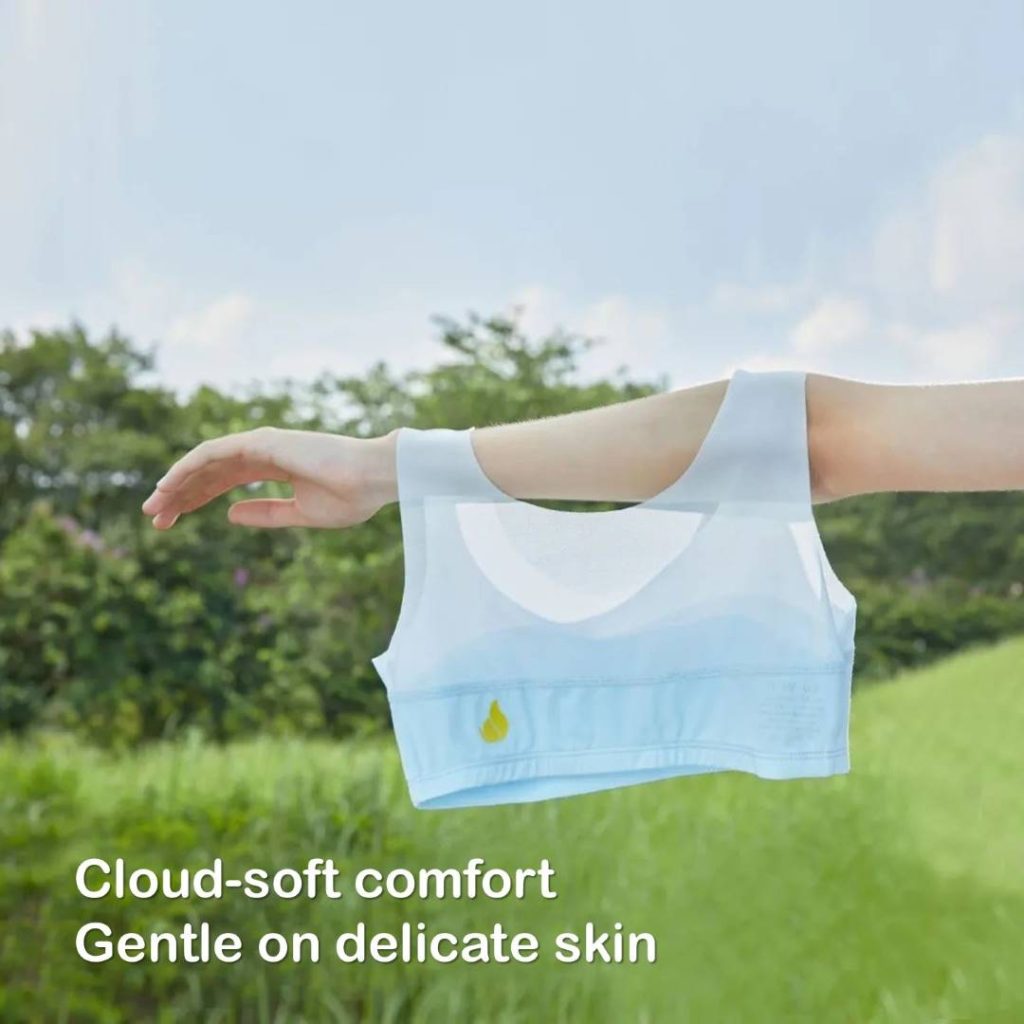If your daughter juggles puberty, school, and sensory quirks, you’re not alone.
Adaptive clothing can be a simple, powerful ally in helping her feel steady and ready to learn at school.
What Adaptive Clothing Does for SPD at School
Adaptive clothing is designed with sensitive bodies in mind—soft fabrics, flat seams, tagless labels, and easy closures. For kids with SPD (Sensory Processing Disorder) or autism, these features reduce irritation and help minimize morning battles, so focus can stay on lessons and friendships. Think of it as clothing that moves with her, not against her.
-
Soft, breathable fabrics like cotton or modal blends feel kinder on the skin.
-
Flat seams and no tags prevent itching and rubbing.
-
Easy fasteners (Velcro, magnetic closures) reduce dressing frustration.
-
Calm colors and seamless designs help avoid visual or tactile overload.

Why School Matters for SPD and Clothing
Kids spend long hours in uniforms or everyday school clothes. If the fabric itches, seams rub, or tags scratch, the body can become a continuous distraction, which steals attention from learning and peer interactions. The right adaptive options keep kids calm, engaged, and ready to participate in class and activities.
-
Comfort supports better focus and participation.
-
Confidence grows when kids feel good in what they’re wearing.
-
Morning routines become less stressful with dependable garments.
Suyiyi’s guidance on helping sensory-sensitive tweens build confidence can be a great starter: Help Sensory-Sensitive Tween Build Confidence.
Extended Insights: SPD Prevalence and Impact You’ll Want to Know
-
About 5–16% of school-aged kids have sensory processing problems, meaning roughly 1 in 6 to 1 in 20 students in a classroom may be navigating SPD daily. This matters because comfort in clothing directly ties to focus and participation.
-
ADHD often co-occurs with sensory sensitivities; many kids with ADHD report clothing-related discomfort affecting attention. This is a common pairing families notice when shopping for sensory-friendly options.
-
Up to 93% of people with autism show SPD symptoms, underscoring why school wardrobe choices can influence mood, behavior, and learning engagement.
Real-life wins from adaptive clothing programs
Schools and families adopting sensory-friendly clothing report smoother mornings, fewer meltdowns, and better classroom focus. When clothing aligns with sensory needs, kids are more likely to engage with teachers and peers and feel confident trying new activities.
-
Compression and weighted options can provide calming input for some kids, supporting attention and behavior.
-
Uniform flexibility helps families balance school norms with sensory comfort.
Practical Tips for Moms (Quick-start)
-
Start with tagless, seam-free pieces to reduce irritation.
-
Look for fabrics labeled soft, breathable, and stretchy; test care labels for easy washing and quick drying.
-
Try a few closet staples with magnetic or Velcro fasteners for mornings that feel doable.
-
Involve your tween: offer two outfit options and let her choose to boost independence and confidence.
-
Consider gentle compression or light-weight vests if approved by her occupational therapist for extra calming input.
See product-level examples that emphasize comfort-first design:
-
Sensory-friendly training bras: Sensory Friendly Bras for Autistic & SPD Tweens.
-
Best sensory-friendly training bra for issues: The Best Sensory Friendly Bra for Kids with Sensory Issues.

Practical, school-focused examples
-
Ask the school about sensory-friendly uniform options or a flexible dress code that preserves uniforms’ identity while reducing itch and tag irritation at the seams. External perspectives on sensory-friendly uniforms can broaden the conversation: Sensory-Friendly School Uniforms.
-
Introduce comfortable, breathable layers for classrooms with variable temperatures; a soft cardigan or light zip hoodie can be a big comfort win without breaking uniform guidelines.
FAQs
What makes adaptive bras different from regular ones for SPD?
Adaptive bras for SPD emphasize tagless designs, flat seams, soft fabrics, no wires, and easy closures to minimize irritation and maximize comfort throughout the school day.
Are there options for active wear and gym class?
Yes. Look for moisture-wicking, breathable fabrics and flexible fits—ideally seamless or with flat seams to prevent irritation during movement. Suyiyi’s ActiveBloom and other performance-ready options are designed with sensory comfort in mind: The Best Sensory Friendly Bra for Kids with Sensory Issues.
How can I talk to my child’s school about sensory-friendly uniforms?
Frame it around comfort and learning outcomes: fewer distractions, better focus, improved attendance, and happier mornings. Many districts are open to sensory-friendly options when supported by OT input and clear evidence of benefits.
Ready to try sensory-friendly bras that actually fit?
If you’re shopping for a sensory-friendly first bra or tween bra that supports her growth without irritation, explore Suyiyi’s comfort-first options today. Our designs are tagless, seam-free, and built for real kids who move, play, and learn every day.
Final note for moms: adaptive clothing is not a luxury—it’s a practical way to help your child participate fully in school, feel confident, and reduce stress from dressing. For more in-depth guidance, the linked resources offer a broad view of how sensory-friendly clothing supports children with SPD across ages and settings. The keyword here is accessible comfort, and Suyiyi is committed to bringing that to every school day.
